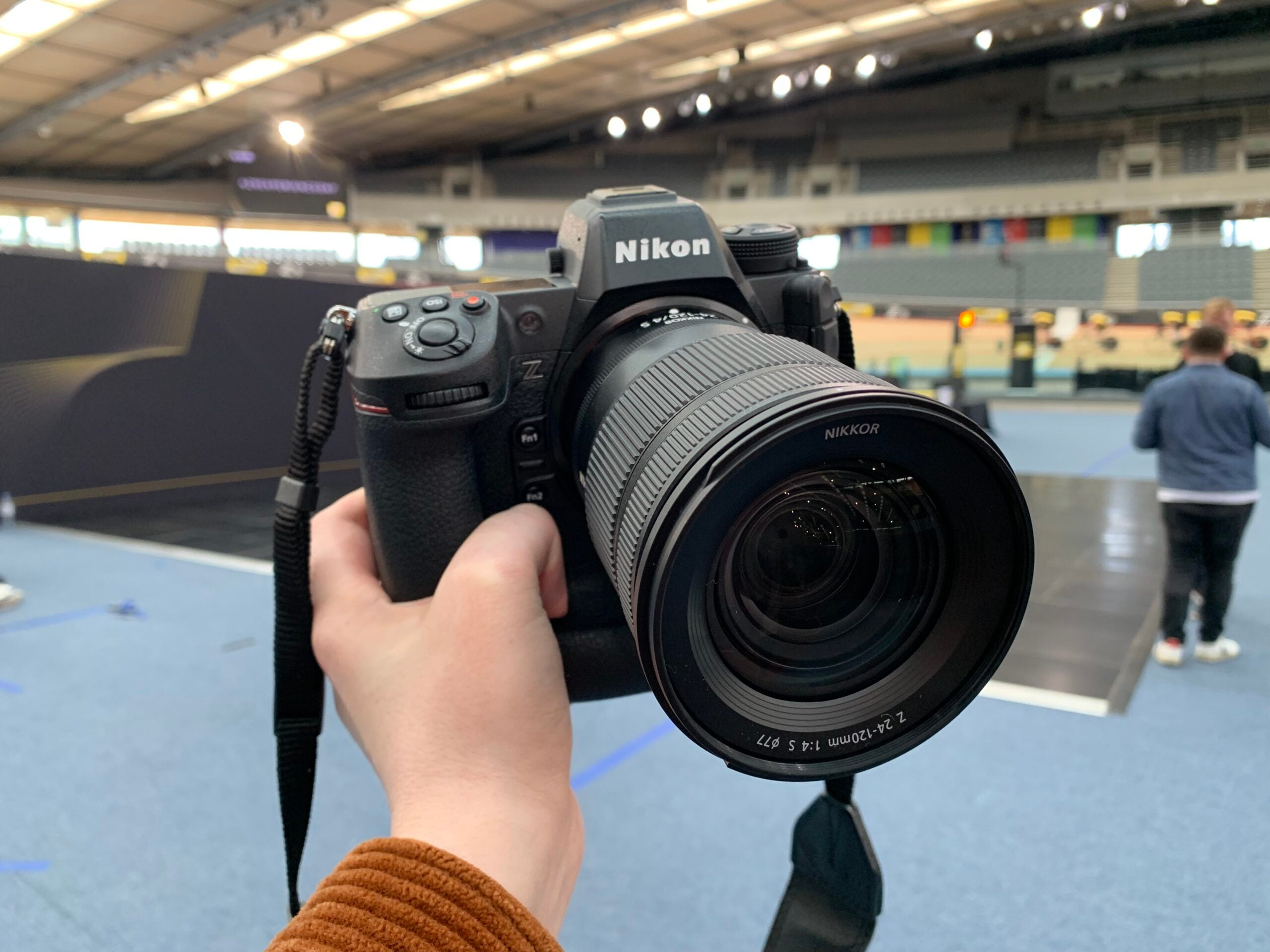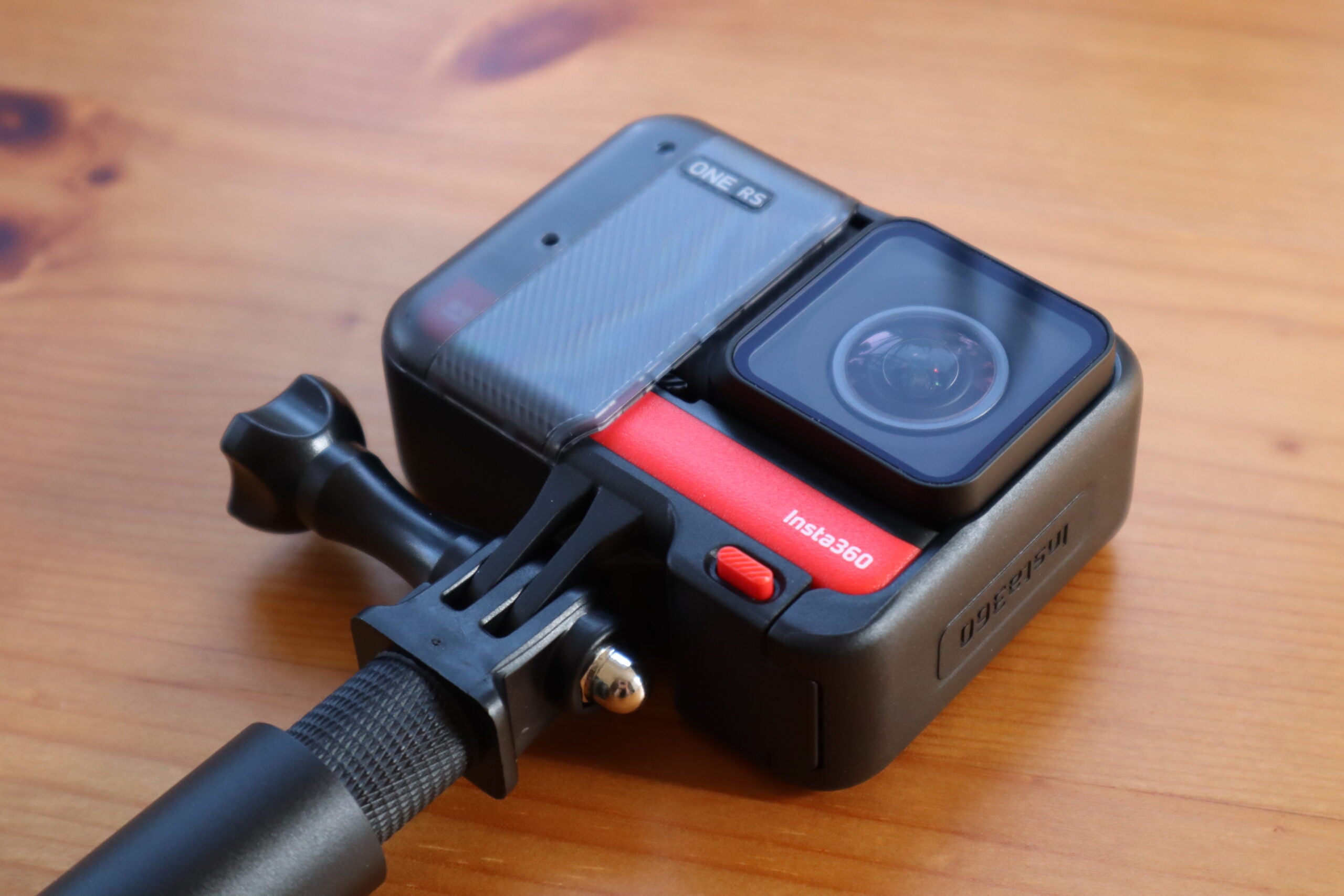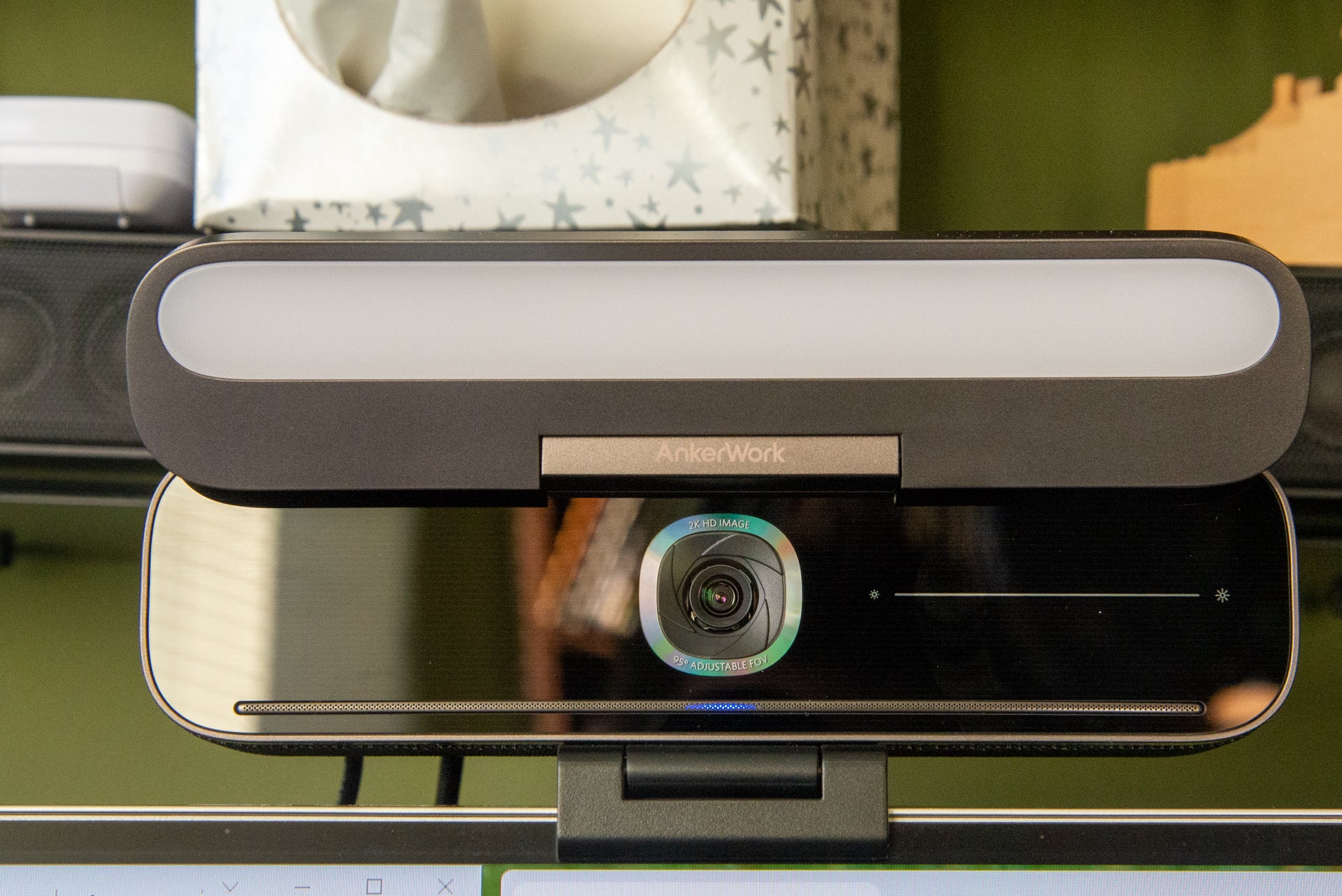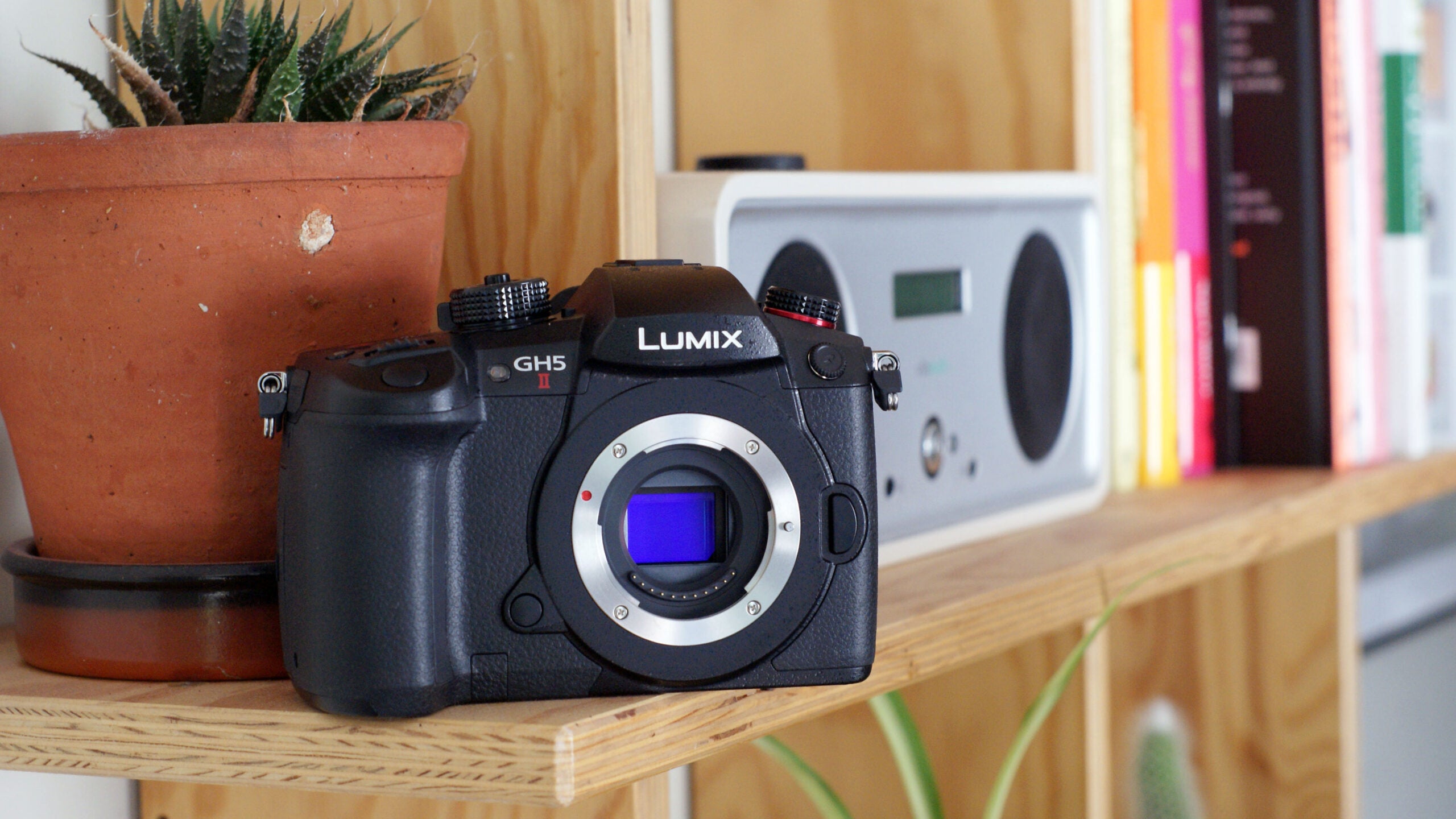
A charming, great-looking instant camera that arrives with a wealth of lens and filter options. The Instax Evo is the best hybrid camera Fujifilm has released and the added digital benefits will make it difficult to return to purely analogue options.
Pros
- It looks fantastic
- Plenty of effects to add an extra flair to shots
- Easy to use
- Digital smarts save on wasted shots
Cons
- Screen is difficult to see in bright conditions
- Some odd quirks with the UI and app
- Slow to charge
Availability
- UKRRP: £174.99
- USARRP: $199.99
- EuropeRRP: €199.99
Key Features
-
Internal storage for photosYou can store about 45 shots in the camera’s internal memory, or add more through a microSD card. Fujifilm says you can store 850 images per 1GB of SD card space -
Rear displayA 3-inch LCD panel with a 460k-dot resolution -
Specs1/5-inch CMOS with primary colour filter, an f/2.0 aperture and auto focus
Introduction
The Instax Mini Evo is Fujfilm’s latest, and comfortably greatest, hybrid instant camera. It also happens to be one of my favourite pieces of tech I’ve reviewed in a long time.
Thanks to its vintage design and more modern internal smarts, the Evo Mini is a great starting point for someone looking to get into instant photography.
It pairs a 5-megapixel digital sensor with an Instax Mini printer, adding a slew of effects to customise photos. There’s Bluetooth connectivity for smartphone app connection, USB charging, and a slot for a micro SD card, too.
Design and Screen
- Retro design looks great
- 3-inch rear display looks fine, but struggles in bright conditions
- Plenty of manual dials and buttons to explore
The Instax Mini Evo looks great. It has a vintage camera aesthetic that mimics some of Fujifilm’s own higher-end cameras such as the X100 series, complete with faux-leather flourishes and a selection of dials and levers to explore.
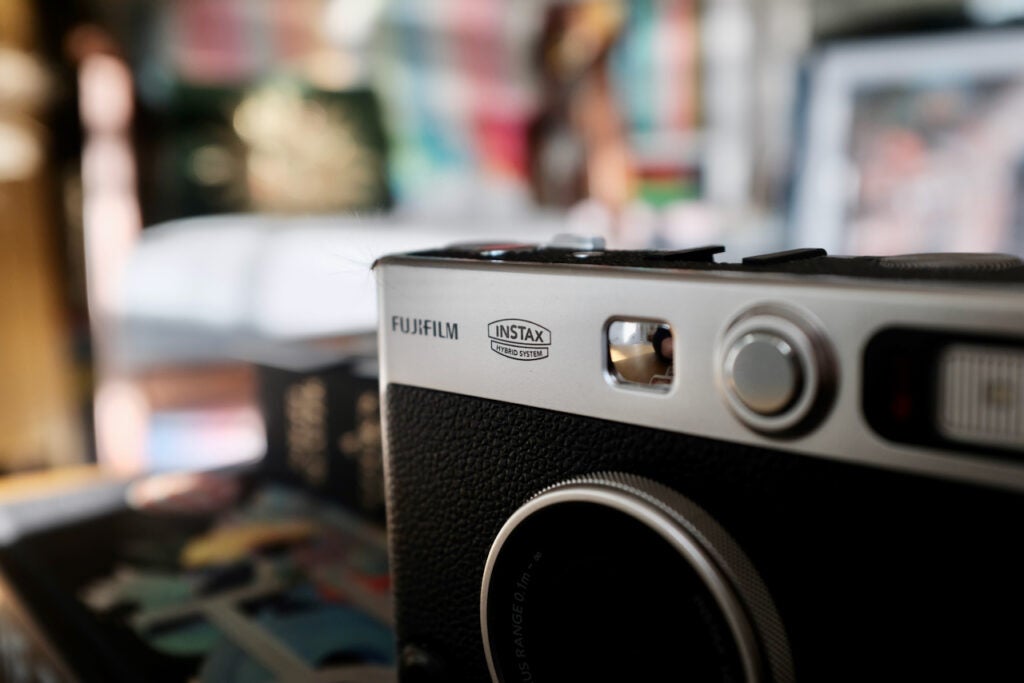
Pick it up, though, and it feels very much a fairly cheap instant camera. The construction is almost completely plastic, and it lacks the weighty finish you’d expect from a pricier model. Still, the black and silver colour combination is tasteful, and the plastic body keeps the weight down, enabling you to slip it into a bag with ease.
Around the front, there’s a large, circular lens, a switch to turn on the camera, a module for the flash, and one of two shutter buttons. On the top you’ll find another shutter button, a dial that lets you easily flip through filter presets without faffing about with menus, and – one of my personal favourite additions to this camera – a physical lever you pull to print out a snap. The latter is such a brilliant touch that adds some tactility to the printing process.
Around the back of the Mini Evo is a 3-inch LCD screen for viewing photos before they’re printed, alongside a directional pad for navigation and three buttons. Since this is an instant camera, the film sits beneath the screen and it tucks away neatly.
The screen itself is fine for what its purpose here, and delivers a decent representation of the image you’re about to print. It isn’t the sharpest, nor the most colourful – but then neither is the image that’s printed out. I struggled to properly see the interface on a very sunny day, but visibility indoors was much better.
Oddly, the interface you’ll navigate through on the display is locked to a portrait orientation, even though the design of the camera means it looks good whether you’re shooting portrait or horizontal. It would have been great to see an accelerometer inside, capable of smartly switching the layout depending on the mode in which you’re shooting – or even just a manual rotation option.
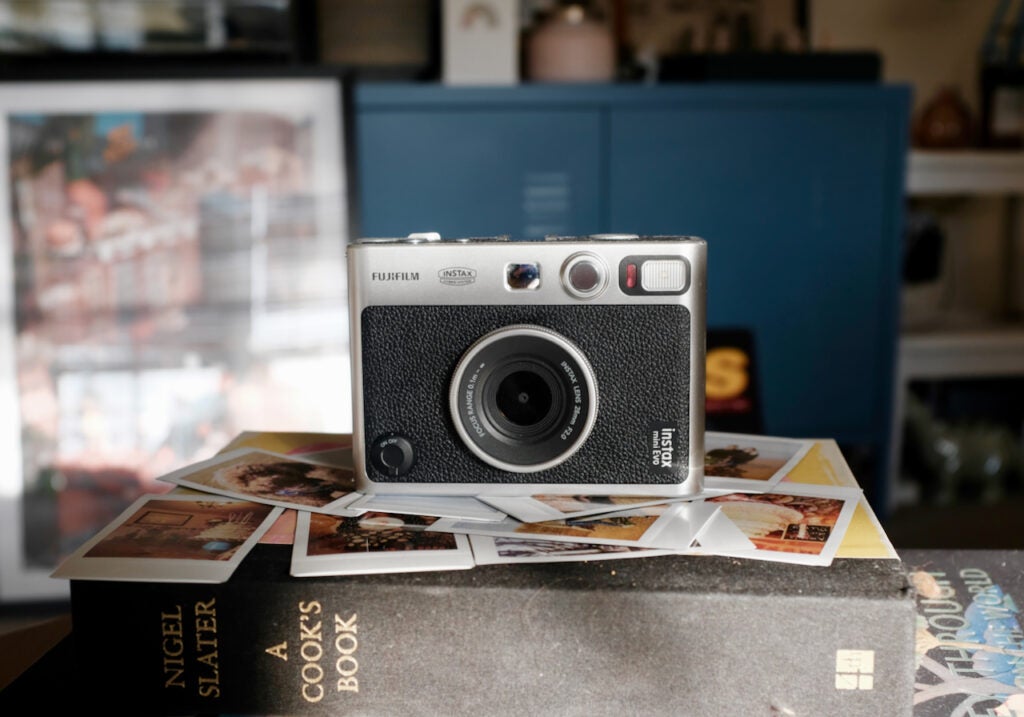
Features
- Smartphone connectivity via Bluetooth
- Micro-USB charging
- Various filter and lens options
Since this is a hybrid instant camera, it naturally comes with a few more skills than your more traditional Instax offering. For me, this camera is certainly worth considering for the benefit of not having to waste pricey ink and paper on a shot that comes out blurry. Following a month or so of using the Mini Evo very heavily, I can’t imagine going back to a traditional instant camera – the experience here is just more refined, without losing any of the charm.
The Mini Evo can hold around 45 images on its internal storage, or you can pop in a microSD card to increase that amount. There’s an app for transferring snaps to your phone, too; but you can only transfer across images you’ve actually printed out, not those you have stored on the camera. This seems a confusing limitation, one that could hopefully be removed in a future software update.
When you’re shooting there are multiple filter and lens options accessible from a quick twist of the top dial, and, as with any kind of filter, the results are very much down to personal taste. I tended to stick with the ones that altered the look subtly rather than turning them sepia. Lens effects include vignetting, soft focus and blur; while the filter options include vivid, pale and monochrome (among others).
Once a photo is taken, you then have the opportunity to check it’s up to standard before printing it out. You can also print shots you’ve already taken at a later time, if you run out of paper during the process.
The printing process itself is quick and straightforward. Take a shot, check the quality, and then pull the lever to set off printing. A nice little animation appears on-screen and about 20 seconds later, the picture pops out and starts to develop.
The Mini Evo charges via micro-USB, which is a bit of shame when USB-C has become common across nearly all tech. A full charge took just under three hours – which will allow the camera to capture approximately 100 shots. Of course, start printing them out and you’ll drain the cell much quicker. For instance, I depleted the battery completely printing out about 25 snaps.
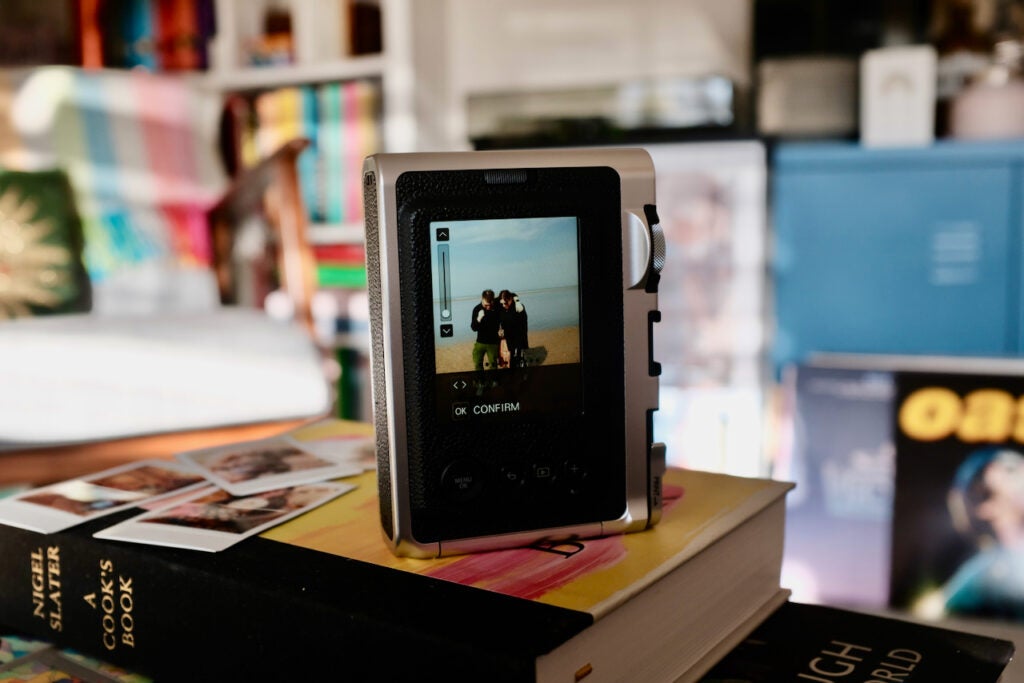
Image Quality
- Images display good saturation and a pleasing, retro look
- Low-light performance isn’t great
- Uses Instax Mini film
Once you get past the hybrid nature of the Mini Evo, the actual images it produces are fairly standard instant-fare, on a par with other Instax Mini cameras.
Images are decent, with punchy colours and sufficient detail considering their small size. Importantly, the photos are charming and fun. This camera is never going to rival the images captured on one of the best camera phones –heck, I doubt you’ll be able to buy an Android phone that takes worse photos – but that really is beside the point.
Particularly dark and bright points don’t tend to come out too well, but learning what looks good (and what doesn’t) is all part of the experience when using such a camera.
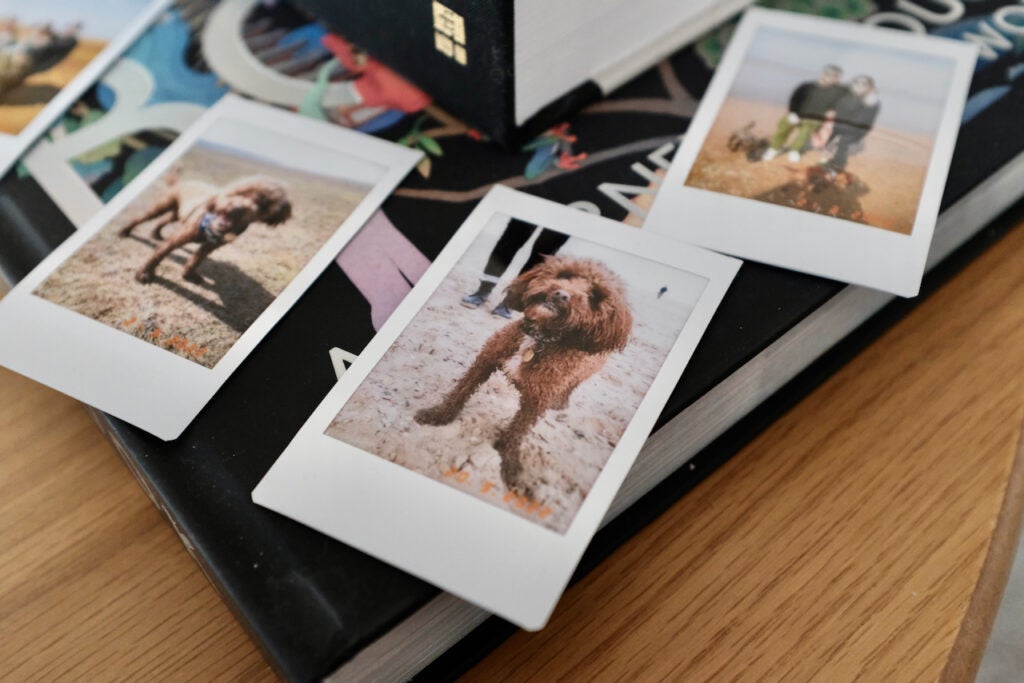
I spent a lot of time taking pictures of my dog, with the camera doing a good job of pulling some of the brighter colours from the fur. Skin tones did tend to to look a little on the pale side, though, especially in the default shooting mode. The Instax Evo Mini does include a flash for low-light situations, but I can’t say I’m a fan of how the snaps come out at night – unless there’s another strong source of light in the room. In addition, I consistently struggled to get a shot in focus when the lighting wasn’t optimal.
Flip through the various filters and lens options and the pictures can vary a lot. Each has a distinct look when printed, which is nice to see and adds a variety that’s often missing from Instax cameras. However, once you’ve captured an image, you can’t switch out or remove the filter, nor can you add a filter to an image that was taken without one.


Latest deals
Should you buy it?
You want a smarter instant camera What makes the hybrid instant camera great is that it retains the charm of analogue while adding some of the smarts of the modern camera. You don’t need to print every shot you take, so you won’t waste pricey paper and ink on poor results.
Image quality is key While the pictures do look good, this camera’s focus veers towards being fun, and printing your shots thereafter. If you just want a camera for transferring pictures to your phone, this isn’t it.
Final Thoughts
The Fujifilm Instax Mini Evo is a joy to use and an easy recommendation for anyone who wants an excellent instant camera. It might be pricier than the purely analogue options in Fujifilm’s line, but the benefits here make that jump worthwhile.
The digital nature means you won’t waste paper and ink on out-of-focus, blurry shots that would just go straight in the bin, while the added lens and filter options add some extra variety. It’s also just a sleek-looking camera with a smart design and impressive finish.
There are some odd limitations with how pictures can be transferred to the smartphone app, the use of micro-USB feels outdated, and the strange portrait nature of the user interface could be fixed in a successor. For now, though, the Fujifilm Instax Mini Evo is up there with the best instant cameras around.
How we test
We test every camera we review thoroughly. We use set tests to compare features properly and we use it as our main device over the review period. We’ll always tell you what we find and we never, ever, accept money to review a product.
Tested over a month
Used in various conditions
Printed off more than 50 pictures and compared to other Instax cameras
FAQs
You should be able to shoot around 100 snaps off a single charge, but the actual number will depend on how many images you print out. In our tests, a full 0-100% charge took upwards of three hours.
Sadly, no. There’s only one version of the Instax Evo Mini: silver and black.
This instant camera uses Instax Mini film, which costs around $15/£15 for 20 sheets.
Full specs
The post Fujifilm Instax Mini Evo appeared first on Trusted Reviews.
Author: Max Parker
This article comes from Trusted Reviews and can be read on the original site.
